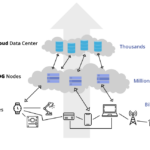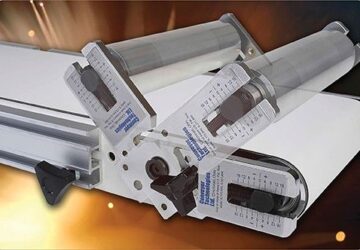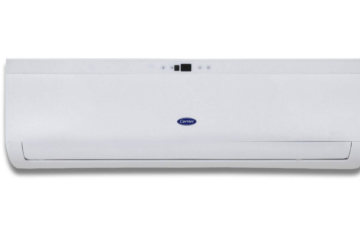Do you want to carry out ETL Streaming? If so, you’re at the right place. Anything you must understand about streaming ETL will be covered in this post. ETL (Extract, Transform, Load) streaming involves processing and transferring real-time data between locations. The database operations extract, transform, and load shorten to ETL.
What is Streaming ETL?
The process and transfer of real-time data from one location to another known as Streaming ETL.In addition, the platform allows for continuous processing of data as it streams in. With the speed at which new technologies are producing data, this kind of ETL is crucial. Technologies that produce massive volumes of data at previously unheard-of speeds include the Internet of Things, online retail, and banking transactions. Consequently, to manage these data streams in real-time, existing ETLs needed to be more efficient.
ETL: What is it?
Extract, Transform, and Load is shortened to ETL. To get data from one database and transfer it to another, ETL essentially integrates all three database tasks into a single tool. ETL is an extremely ancient idea that has been developing since the 1970s and 1980s. In the beginning, the process was sequential, the data was not processed quickly, and reporting and analytics were occasionally required.
How Does ETL Operate?
- Extract: As the name implies, this process involves gathering data from many sources, including databases, data warehouses, data streams, and event streams. Formats may also differ, including JSON, CSV, TXT, etc.
- Transform: Various operations are carried out on the data at this step to clean it and get it ready for reporting and analysis.
- Load: The last stage involves loading or storing the data in a data warehouse or other type of database, which may be non-relational like MongoDB or relational like MySQL.
Streaming vs. Batch ETL
To extract data in batches from a source system. It uses ETL software in the conventional data setting. Generally, on a schedule, convert the data, and then load it into a repository like a database or data warehouse.
Streaming ETL Architecture in Real Time
Traditional ETL design and real-time streaming architecture are essentially the same. The three essential components of an ETL process are an engine, a destination, and a data source. The data in the Real-time Streaming architecture originates from the data sources and ETL tools process and transform it as input.
Advantages of Stream Processing:
- Since you are processing each event in real-time, one at a time, you will always have up-to-date data available. There will be little data delay.
- Because you don’t have to operate the operations on little servers, it helps with cost savings. Every bit of data or stream will undergo a tiny amount of processing in real-time.
A Few Samples of Streaming ETL
· Credit Card Fraud Detection:
The fraud detection program receives or extracts the transaction data from your credit card swipe. After that, the program uses fraud detection algorithms after joining the transaction data in a transforming phase with extra information about you.
· Internet of Things:
In real-time, devices generate hundreds of data points that are utilized by other processes. How is it feasible to collect all these data points in real-time, clean them up, prepare them for processing, and then move them to a different stage to add value?
Configuring ETL for Streaming
The following are required to set up streaming ETL:
- A data source that feeds the system with data.
- An ETL Streaming Engine to handle every ETL operation.
- As a final option, consult the data.
AWS Glue
The fully managed extract, transform, and load (ETL) service AWS Glue makes it simple to get your data ready for analytics by loading it quickly. To operate constantly and ingest data from continuous stream systems like Amazon Kinesis Data Streams & Apache Kafka, AWS Glue has added Streaming ETL based on Apache Spark.
Microsoft Azure Databricks
Using Azure Databricks, a fully managed service that offers robust ETL & analytics in addition to many other features, Microsoft Azure also offers the ability to set up streaming ETL.
GCP BigQuery
Additionally, GCP offers the ability to set up a streaming ETL utilizing the BigQuery, DataFlow, Pub/Sub, and Apache Beam concepts.
Streaming ETL Tools
Over the years, several businesses have developed product suites centered around ETL. The majority of these suites and tools were developed for the batch world. Although technology companies are making an effort to bring their products up to date with the world of streaming data, the majority of them just don’t have the features required for streaming ETL.
Conclusion
With good reason, streaming ETL is sweeping the data processing world: it’s quicker, more scalable to quantities and speeds, requires less complicated schedule management, and interacts with current systems with ease. It enhances productivity, efficiency, and decision-making inside the organization. Firstly, if ETL streaming is unfamiliar to you, give it a try. Additionally, it may have a significant effect on your group and company.
FAQ’s
What does ETL streaming entail?
Extract, Transform, Load, or “streaming,” is the processing and transfer of real-time data from one location to another.
Using an example, what is data streaming?
There is no beginning or finish to a data stream. For as long as necessary, it continues and continuously gathers data.
What distinguishes streaming ETL from batch ETL?
Streaming ETL provides reduced latency and real-time data processing.
What distinguishes ELT streaming from ETL streaming?
On a secondary processing server, data is transformed via the ETL process.








